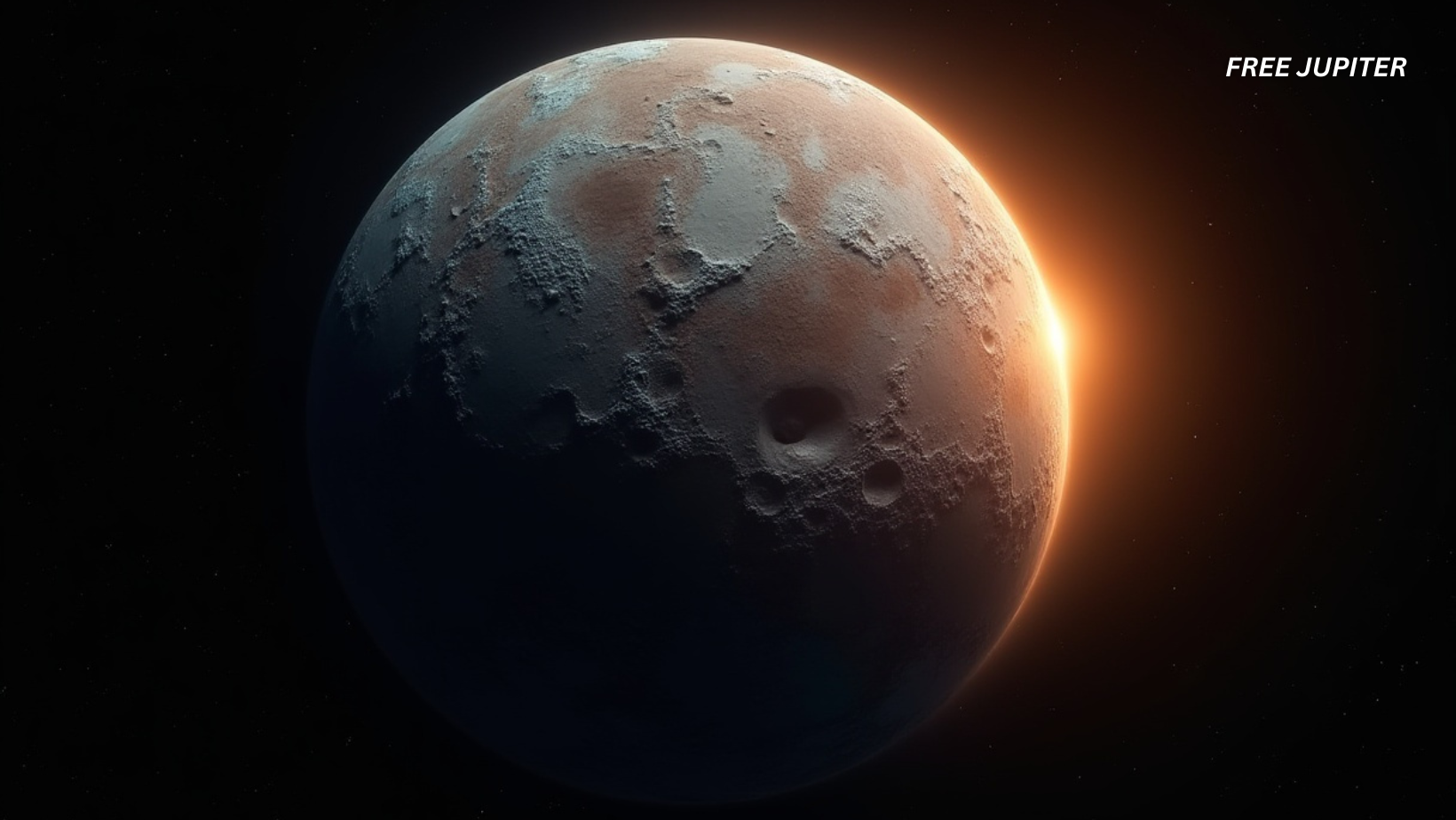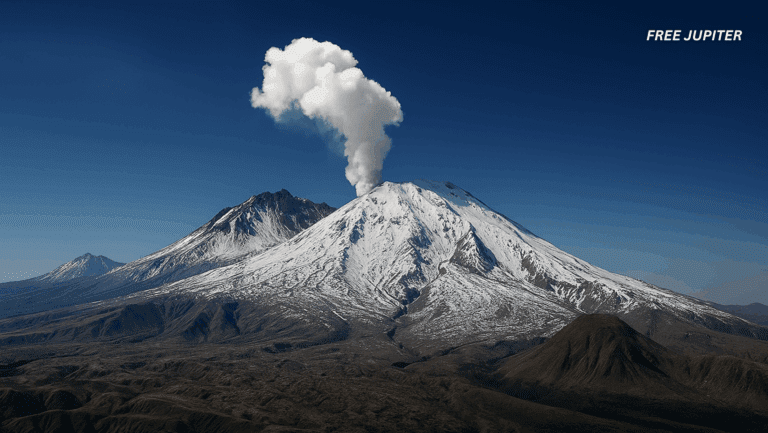Friendly Note: FreeJupiter.com shares general info for curious minds 🌟 Please fact-check all claims—and always check health matters with a professional 💙
When we think about the possibility of life beyond Earth, our imaginations often drift to the dramatic — Jupiter’s moon Europa with its vast hidden ocean, Saturn’s icy Enceladus spraying geysers into space, or the red desert plains of Mars where water once carved valleys. But what about Ceres, the quiet and unassuming dwarf planet that drifts in the asteroid belt?
At first glance, Ceres doesn’t look like much. It’s small, cold, and shrouded in ice. But new research from NASA suggests this modest world may have once possessed a powerful secret: the right combination of water, organic molecules, and long-lasting chemical energy. Together, these ingredients could have made Ceres not just an interesting rock in space, but a world that flirted with habitability.
A Planetary Underdog in the Spotlight
Ceres holds the title of “largest object in the asteroid belt,” sitting halfway between Mars and Jupiter. It’s about 585 miles (940 kilometers) wide, which means if Earth were the size of a basketball, Ceres would be closer to a marble. Despite its size, it has fascinated scientists for over two centuries.
First spotted in 1801 by Italian astronomer Giuseppe Piazzi, Ceres was initially hailed as a new planet. Then, as more and more small bodies were discovered in the same region, it was demoted to asteroid status. Finally, in 2006, the International Astronomical Union gave Ceres a new classification: dwarf planet.
While not as flashy as Pluto or as mysterious as Europa, Ceres has turned out to be far more intriguing than expected. Thanks to NASA’s Dawn spacecraft, which orbited the world between 2015 and 2018, we now know that Ceres hides a fascinating interior story.
Read more: NASA’s Juno Spacecraft Could Intercept Interstellar Visitor 3I/ATLAS As It Passes Near Jupiter
The Dawn of Discovery
Launched in 2007, the Dawn mission had an ambitious goal: to visit both Vesta and Ceres, the two largest bodies in the asteroid belt. It achieved this thanks to its revolutionary ion propulsion system, which allowed it to “glide” between worlds in a way traditional chemical rockets never could.
When Dawn arrived at Ceres, it quickly revealed that this wasn’t just another lifeless chunk of rock. Bright, reflective patches appeared across its surface — so bright that they almost looked like artificial lights from orbit. Scientists soon discovered that these spots were made of salts, left behind as briny liquid seeped up from the planet’s interior and froze.
Even more astonishing was the evidence of a vast underground ocean. Beneath Ceres’ icy crust lies a reservoir of salty water, a frozen remnant of what may once have been a global ocean. Add to that the discovery of organic molecules on the surface, and suddenly Ceres didn’t look so dull after all.
But there was still a missing piece of the puzzle. Water and carbon-based molecules are essential for life as we know it, but they are not enough on their own. Life also requires energy — a spark to fuel biological processes. Without it, even the richest soup of molecules remains sterile.
The Secret Ingredient: Energy
A new study, published in Science Advances, suggests that Ceres may have once had that very spark. Using thermal and chemical models of Ceres’ interior, researchers examined how heat and chemical reactions might have played out over billions of years.
What they found was tantalizing. Roughly 2.5 to 4 billion years ago, Ceres’ rocky core was still warm thanks to the decay of radioactive elements — the same natural process that still keeps Earth’s mantle hot today. As this heat radiated outward, it likely drove hot, mineral-rich water upward into the subsurface ocean.
This process is strikingly similar to what happens on Earth at hydrothermal vents along the ocean floor. There, superheated water gushes out of cracks in the crust, mixing with cold seawater and creating chemical gradients. For microbes, these environments are paradise. They don’t need sunlight; they feast on the chemical energy provided by the reactions between hot fluids and surrounding rocks.
If Ceres had a comparable system billions of years ago, its underground ocean might have been an energy-rich environment — a buffet table for any microbes that managed to arise.
Read more: NYC Woman Finds 2.3-Carat Diamond At Arkansas State Park—Plans to Use It for Engagement Ring
A Time When Ceres Was Warmer
Of course, Ceres today is no microbial paradise. It’s cold, with little liquid water remaining, and its underground reservoir has largely frozen into brine. The internal heat from radioactive decay has faded over time, leaving the dwarf planet much less active than it once was.
The best window for habitability likely fell between 2.5 and 4 billion years ago, when Ceres’ core reached peak warmth. That was the period when water and heat would have been most abundant, and when hydrothermal circulation might have provided the necessary energy for simple life.
Unlike Europa or Enceladus, Ceres doesn’t have the advantage of tidal heating. Those icy moons stay active because they orbit giant planets, which stretch and squeeze them gravitationally, generating heat. Ceres orbits alone, with no planetary partner to keep it geologically alive. That means its “life-friendly” era was probably temporary.
What This Means for the Search for Life
The implications of Ceres’ story stretch far beyond this one dwarf planet. If such a small world could once have harbored the ingredients for life, then many other icy bodies across the solar system might also have had their own habitable windows.
Consider Pluto, or the countless icy objects in the Kuiper Belt. Many of them would have been warmed by radioactive decay when they were young. Even if they are frozen solid today, their pasts may have been much more dynamic.
This broadens our understanding of where life might emerge. Instead of focusing only on the “usual suspects” like Mars, Europa, and Enceladus, scientists are now considering a wider range of environments — including dwarf planets and asteroids that were once warm enough to host liquid water.
In a way, Ceres serves as a reminder that habitability is not a fixed state. Worlds can pass in and out of it depending on their internal energy, much like candles that burn brightly before eventually flickering out.
The Legacy of the Dawn Mission
All of these discoveries owe their existence to the Dawn mission. Beyond its scientific contributions, Dawn was also a technological triumph. Its ion propulsion system allowed it to do what no other spacecraft had done before: orbit two completely different celestial bodies.
Managed by NASA’s Jet Propulsion Laboratory, with contributions from the German Aerospace Center, the Italian Space Agency, and other international partners, Dawn expanded our knowledge of the asteroid belt in ways that continue to resonate today.
When the spacecraft ran out of fuel in 2018, it was left in orbit around Ceres, becoming a permanent silent companion to the dwarf planet it had revealed in such detail.
Read more: A Brain Chip Can Now Read Human Thoughts With 74% Accuracy
A World That Could Have Been
Ceres is not a place where we expect to find life today. But the possibility that it once had the right ingredients — water, organic molecules, and chemical energy — makes it a compelling “what if” in the story of the solar system.
It reminds us that life doesn’t necessarily require Earth-like conditions. Given the right chemistry and a source of energy, even small icy worlds in the shadows of space may briefly hold the potential for biology.
And while Ceres’ window of habitability has long since closed, its story hints that the early solar system was a far livelier, more habitable place than we ever imagined. For scientists searching for life beyond Earth, that makes Ceres not just an underdog, but an essential piece of the puzzle.










